How WWII Propaganda Posters Shaped The Home Front
During World War II, propaganda wasn’t limited to speeches or broadcasts; posters became one of the most powerful tools to influence the masses. Artists and intellectuals were recruited to create vibrant and persuasive visuals that would rally public support.
These posters played a crucial role in shaping public behavior, whether by encouraging people to work in factories or by warning them about the dangers of spies.
In this article, we’ll take a closer look at some of the most memorable WWII propaganda posters, revealing how they influenced morale, shaped attitudes, and strengthened patriotism during one of the most turbulent periods in history.
1. “I Want You” – James Montgomery Flagg, 1940
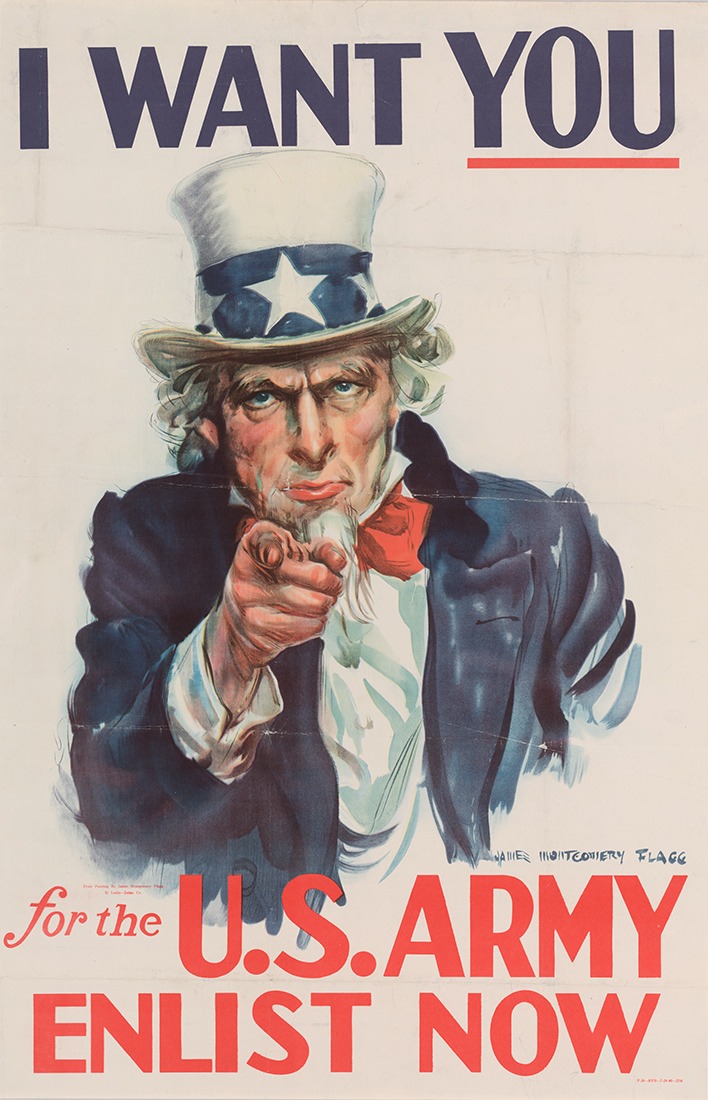
One of the most iconic images from both World War I and World War II is James Montgomery Flagg’s “I Want You” poster featuring Uncle Sam.
Originally created in 1917, the poster was repurposed for WWII to encourage young men to enlist in the army. Uncle Sam’s direct and assertive finger pointed straight at the viewer, creating a personal call to action.
This poster was successful in stirring a sense of duty and urgency. As the U.S. entered the war in 1941, images like these became pivotal in driving mass recruitment.
The government used familiar symbols of patriotism, like Uncle Sam, to connect deeply with the public.
2. ”Women of Britain, come into the factories” – Philip Zec, 1941
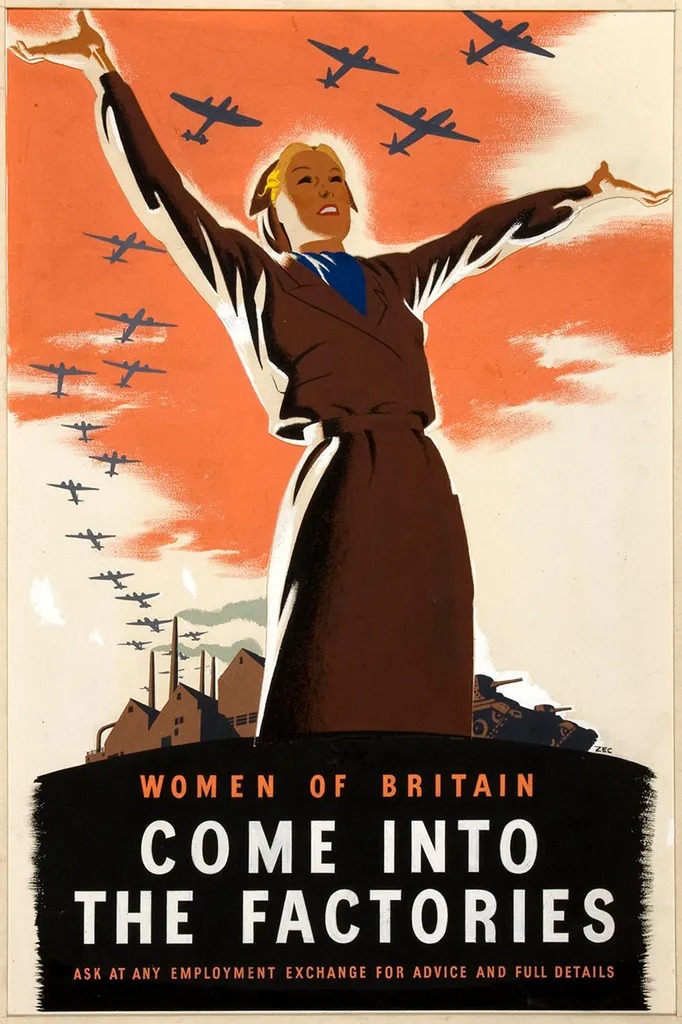
This poster was part of a larger recruitment campaign aimed at urging women to take on essential roles in factories, like producing munitions and supplies for the military.
The image showcases a strong female figure standing confidently in front of a factory, with planes flying overhead, symbolizing the essential connection between women’s labor and the warfront.
Drawing inspiration from Soviet poster art, the design glorified the roles of working women, emphasizing that contributing to the war effort didn’t compromise their femininity.
This campaign played a pivotal role in reshaping gender roles, as it encouraged many women who had never before worked outside the home to step into traditionally male-dominated industries.
3. “We Can Do It!” – J. Howard Miller, 1943
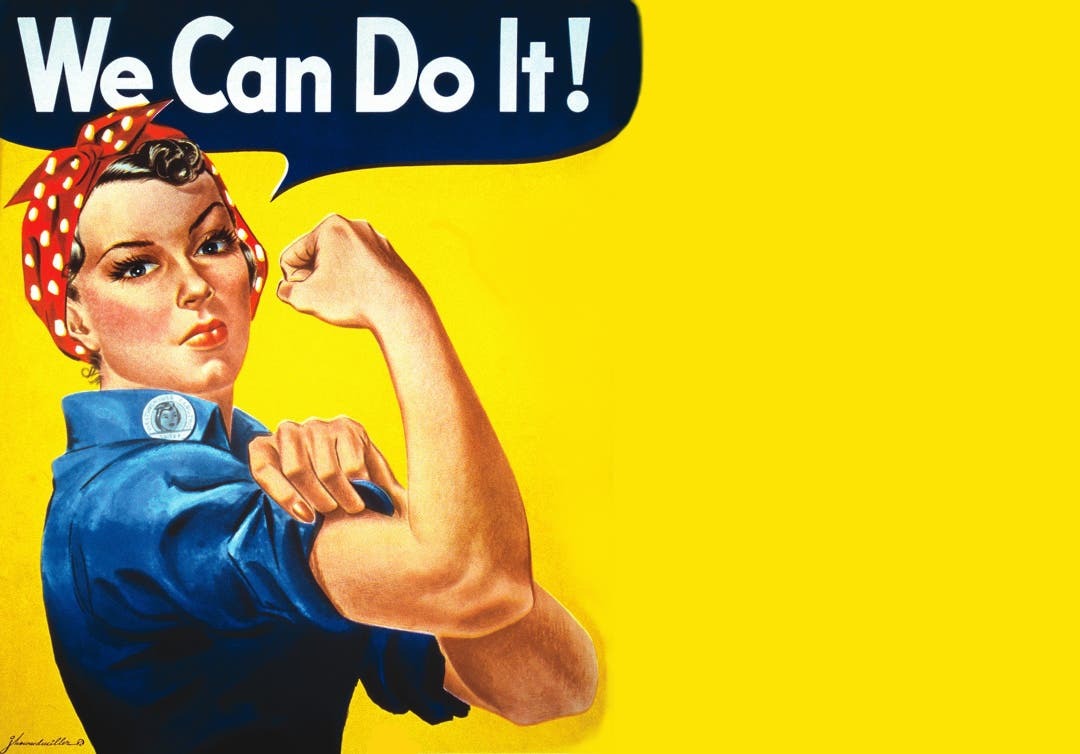
While initially intended to boost morale among workers at Westinghouse Electric, “We Can Do It!”, often associated with Rosie the Riveter, became a symbol of women’s contribution to the war effort.
The poster depicted a determined woman rolling up her sleeves, showcasing her strength and readiness for labor.
As more men went off to war, women were encouraged to fill industrial roles, and this poster played a crucial role in motivating them to do so.
By the end of the war, over 6 million women had entered the workforce, which forever altered traditional gender roles in American society.
4. “Keep Mum, She’s Not So Dumb!” – Harold Forster, 1941
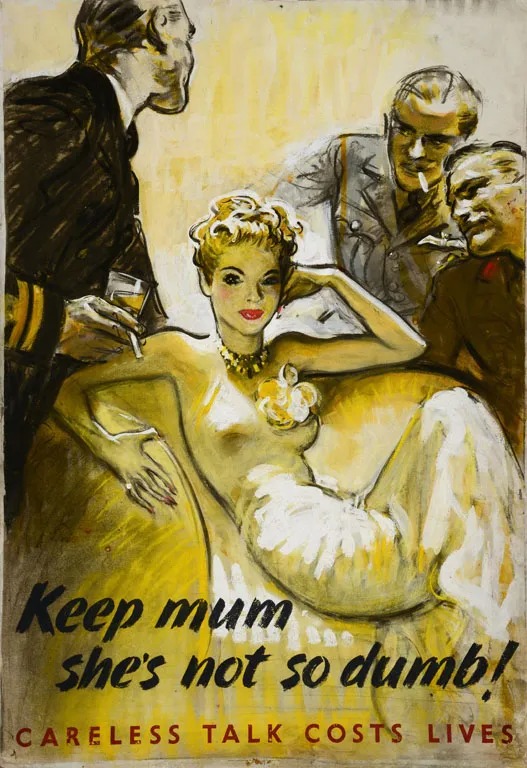
“Keep Mum, She’s Not So Dumb!” was a cautionary poster produced by the British Ministry of Information in 1941.
Featuring a glamorous woman surrounded by military men, the image warned soldiers about the dangers of gossiping in front of civilians—especially women, who might be spies.
The poster tapped into wartime fears of espionage and emphasized the importance of secrecy. It also reflected cultural ideas about women and their roles during the war, portraying them as both alluring and potentially dangerous if underestimated.
5. “Dig for Victory” – Ministry for Agriculture, 1939-1945
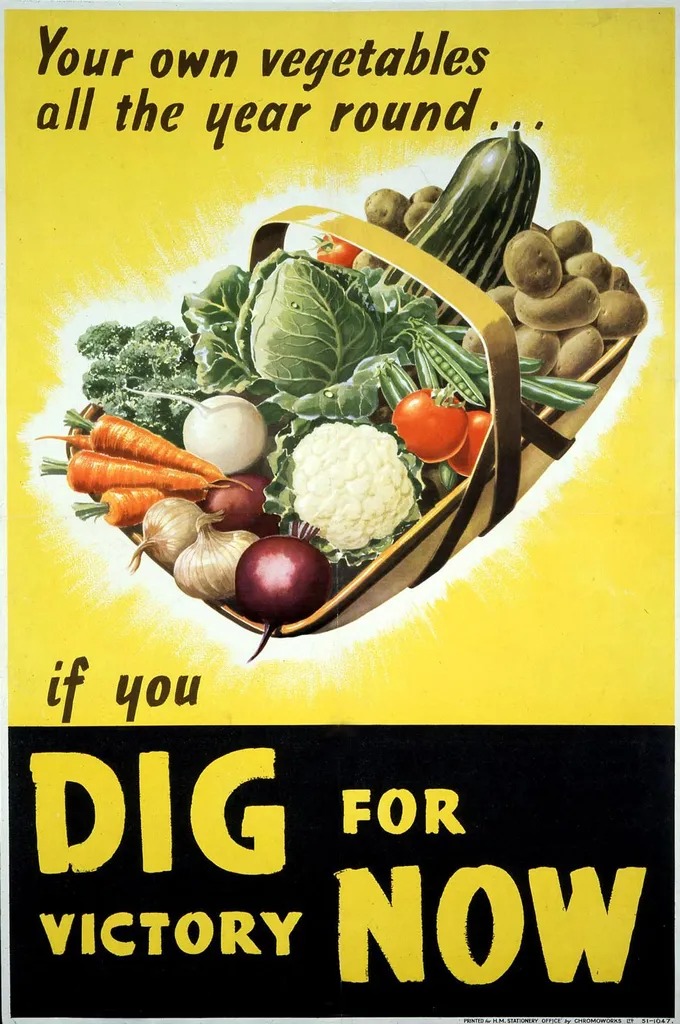
“Dig for Victory” was one of the most famous British wartime campaigns aimed at boosting domestic food production.
As shipping routes were threatened by U-boats, the British government urged citizens to grow their own food in gardens and public spaces.
This poster, featuring baskets of homegrown vegetables, encouraged self-sufficiency and provided hope that citizens could contribute directly to the war effort. By 1943, over a million tons of vegetables were produced.
6. “Make-do and mend” – Board of Trade, 1943
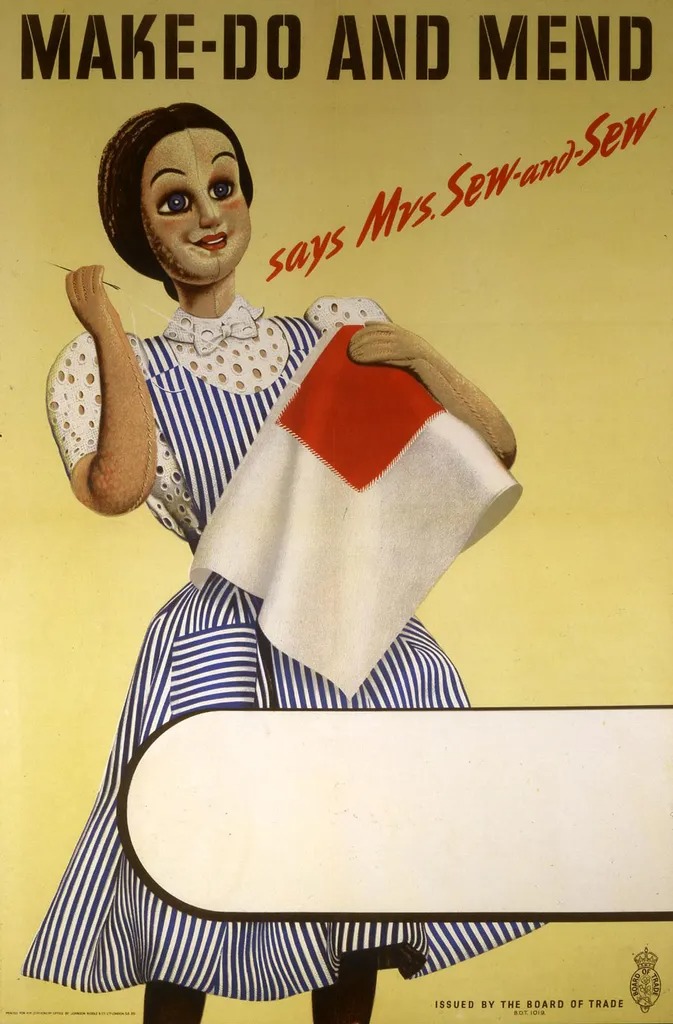
In 1943, the “Make-do and Mend” campaign was launched to help people adapt to clothes rationing during the war. The campaign, which included posters, pamphlets, and events, encouraged citizens to repair and repurpose their clothing instead of buying new items.
Mrs. Sew-and-Sew, a new character featured in the campaign, became a symbol of resourcefulness.
The poster, which had space to add local event details, encouraged people to be thrifty and creative with their clothes. It supported the wartime effort to save materials and make the most of what they had.
7. “When You Ride Alone You Ride with Hitler!” – U.S. Government, 1943

The message of “When You Ride Alone You Ride with Hitler!” was clear: wastefulness was aiding the enemy. The poster depicted Adolf Hitler as a passenger in a car, symbolizing the needless consumption of gasoline by solo drivers.
This image highlighted the importance of rationing during the war, encouraging Americans to carpool and conserve resources.
Such posters instilled a sense of guilt and urgency, reminding citizens that their everyday actions impacted the war effort.
8. “Back Them Up!” – Ministry of Information, 1939-1945
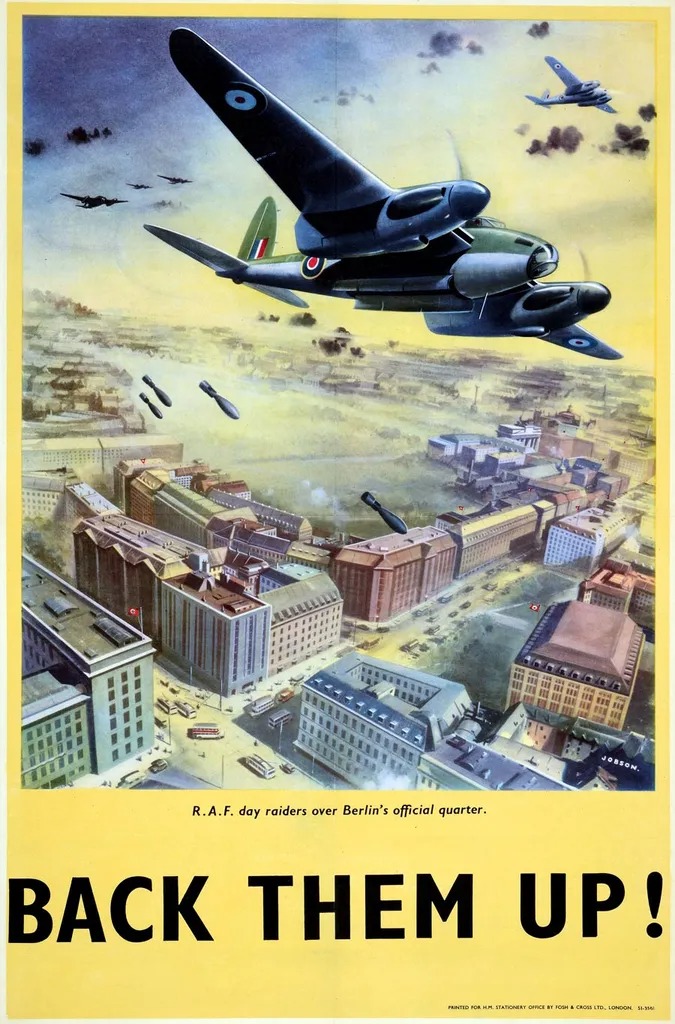
“Back Them Up!” posters were designed to inspire civilians to keep supporting the war effort, even from home.
With striking images of soldiers, planes, and tanks in action, the message was simple: the fighting forces needed the backing of the public to succeed.
These posters reminded people that their work in factories and at home directly contributed to the success of the armed forces. This connection between the home front and the battlefield was a key theme in maintaining morale throughout the war.

